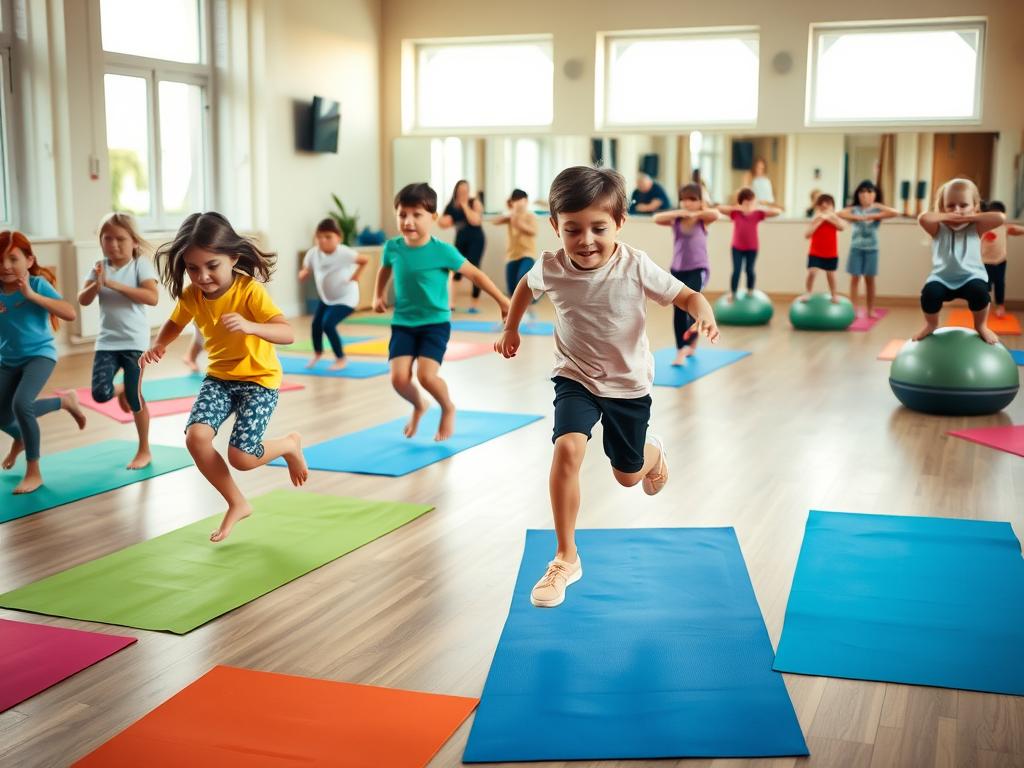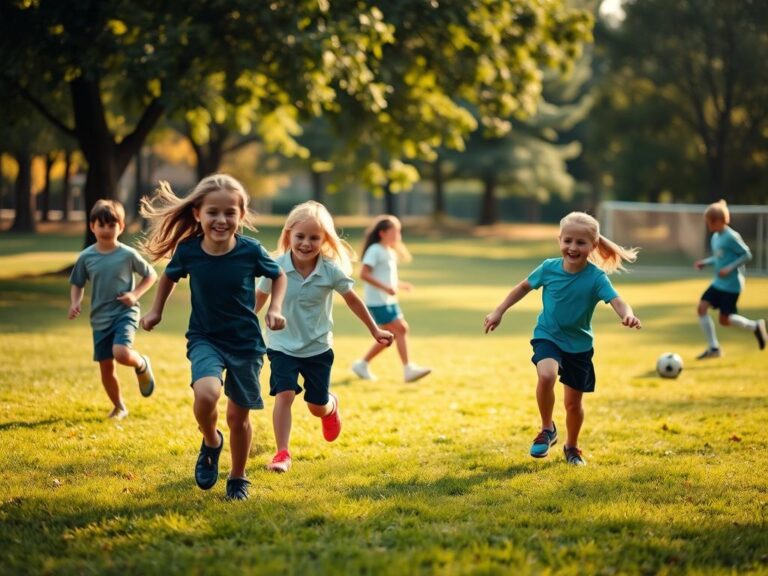Discover fun how to encourage kids to love exercise, with creative activities and tips that make fitness enjoyable and part of their daily routine.
Have you ever wondered if physical activity can truly be fun for children? Let us share a story that might change your perspective. Last year, we ran a half-mile race with a three-year-old. The joy on their face as they crossed the finish line was unforgettable. It reminded us that movement doesn’t have to feel like a chore—it can be a game, a celebration, or even a family adventure.
Many parents worry about how much exercise is enough for their child. Fitness expert Joe Ketterling explains that kids naturally self-regulate their activity levels. They move when they’re ready and rest when they need to. This natural rhythm helps build healthy habits that last a lifetime.
Physical activity isn’t just about health; it’s about creating moments of joy and connection. Whether it’s playing catch, riding a bike, or dancing in the living room, these activities strengthen muscles and bonds alike. Let’s explore how we can make movement a fun and integral part of every child’s day.
Table of Contents
ToggleUnderstanding the Importance of Physical Activity for Children
Physical activity plays a vital role in a child’s growth and development. It builds strong muscles, bones, and cardiovascular systems. It also supports mental health and emotional well-being. Regular movement helps children stay healthy and happy.

There are two main types of physical activity: structured and unstructured. Structured activity includes planned exercises like sports or dance classes. Unstructured activity is spontaneous play, such as running around a playground or playing tag. Both types are essential for a child’s overall development.
Structured and Unstructured Physical Activity Explained
Structured physical activity is organized and goal-oriented. Examples include soccer practice, swimming lessons, or yoga classes. These activities help children develop specific skills and improve fitness levels.
Unstructured physical activity is free and creative. It allows children to explore and move at their own pace. Playgrounds, backyard games, and imaginative play fall into this category. This type of movement is crucial for energy expenditure and social development.
Combating Childhood Obesity with Active Play
Childhood obesity rates have risen significantly in recent years. According to the CDC, obesity affects nearly 20% of children in the U.S. Lack of daily exercise is a major contributor to this issue.
Active play helps children maintain a healthy weight. It also improves cardiovascular health and builds strong bones. The WHO recommends at least 60 minutes of physical activity each day for children. This can include both structured and unstructured movement.
| Type of Activity | Examples | Benefits |
|---|---|---|
| Structured | Sports, dance, martial arts | Skill development, fitness improvement |
| Unstructured | Playground games, imaginative play | Energy expenditure, creativity, social skills |
Families, schools, and communities all play a role in promoting physical activity. By encouraging active lifestyles, we can help children build healthy habits that last a lifetime.
How to Encourage Kids to Love Exercise
Movement doesn’t have to feel like a task—it can be a source of joy and connection. By aligning activities with a child’s abilities and interests, we can make fitness a natural part of their day. Here are some practical strategies to help kids stay active and engaged.
Practical Strategies for Level-Appropriate Workouts
Every child is unique, and their workouts should reflect their current abilities. Instead of focusing on age, consider their skill level and interests. For example, younger kids might enjoy simple games like tag or hopscotch, while older children can try biking or team sports.
Short bursts of activity work well for busy schedules. A 10-minute dance session or a quick game of catch can make a big difference. These small efforts add up over time, helping kids build healthy habits.
Engaging Through Play, Family, and Social Interaction
Play is a powerful tool for encouraging movement. Games like hide-and-seek or relay races make exercise feel like fun, not work. Adding a social element, such as playing with friends or joining a team, can also boost motivation.
Family involvement is key. When parents and siblings participate, kids are more likely to stay active. Try setting mini-goals, like tracking steps with a pedometer or completing a family obstacle course. These challenges create a sense of accomplishment and teamwork.
- Use games to make exercise enjoyable.
- Incorporate family activities like hiking or biking.
- Set small, achievable goals to keep kids motivated.
By making movement a fun and shared experience, we can help kids develop a lifelong love for physical activity. It’s not about perfection—it’s about creating positive memories and healthy habits.
Integrating Exercise into Daily Routines
Finding ways to incorporate movement into a child’s daily life can be both simple and rewarding. By weaving physical activity into everyday schedules, we can help kids stay active without it feeling like a chore. Here are some practical ideas for morning, school, and evening routines.
Morning, School, and Evening Activity Ideas
Start the day with energy by adding movement to the morning routine. Simple stretches or a quick dance session can wake up the body and mind. For example, try a family dance party to upbeat music before breakfast. It’s a fun way to get everyone moving together.
During school hours, encourage movement breaks. Short activities like jumping jacks or a quick walk around the classroom can help kids refocus. After school, activities like biking, skating, or playing tag keep the momentum going.
Evenings are perfect for family walks or bike rides. Walking the dog or exploring the neighborhood together combines exercise with quality time. These small efforts add up, helping kids meet the recommended 60 minutes of daily activity.

Using Technology and Games to Motivate Activity
Technology can be a great ally in making exercise fun. Motion-sensor games on devices like the Nintendo Switch encourage kids to move while playing. These games turn physical activity into an interactive experience.
Pedometers or fitness trackers can also motivate kids by turning movement into a game. Challenge them to reach a step goal or track their progress over time. Even TV commercial breaks can become mini workout sessions—try quick exercises like squats or lunges.
By combining creativity with technology, we can make movement a natural and enjoyable part of every child’s day. These strategies not only support physical health but also create fun, interactive family moments.
Conclusion
Building a foundation for a healthy lifestyle starts with small, consistent steps. Physical activity, whether structured or unstructured, plays a vital role in a child’s growth and well-being. By making movement fun and family-centered, we can help kids develop a lasting love for fitness.
Simple strategies like incorporating games, setting mini-goals, and leading by example can make a big difference. Parents play a key role in shaping their child’s relationship with exercise. When families stay active together, it strengthens bonds and creates positive memories.
Remember, it’s not about perfection—it’s about creating a routine that works for your family. By integrating movement into daily life, we can help kids build healthy habits that last a lifetime. Let’s make fitness a joyful and natural part of every child’s day.
Want more ways to keep your kids active and healthy? Visit FitGuideGuru.com for expert tips on raising fit kids!
FAQ
Why is physical activity important for children?
Regular movement helps build strong muscles and bones, improves fitness, and supports overall health. It also combats childhood obesity and sets the foundation for a healthy lifestyle as they get older.
What’s the difference between structured and unstructured physical activity?
Structured activity includes organized sports or workouts, while unstructured activity is free play like running around the playground or kicking a ball. Both are essential for a child’s development.
How can we make exercise fun for kids?
Turn it into a game! Activities like bike rides, family walks, or team sports keep things exciting. Use technology like fitness apps or dance videos to add a modern twist.
What are some practical ways to integrate activity into daily routines?
Start with small steps like walking to school, playing at the park after class, or having a family dance-off in the evening. Consistency helps build a habit over time.
How can parents be role models for an active lifestyle?
Kids often mimic what they see. When we prioritize movement, whether it’s a morning jog or a weekend hike, they’re more likely to follow our example.
What are some age-appropriate activities for children?
Younger kids enjoy playground time and simple games like tag, while older ones might prefer team sports or biking. Tailor activities to their skill level for maximum enjoyment.
How much physical activity should kids get each day?
Experts recommend at least 60 minutes of moderate to vigorous activity daily. This can be broken into smaller chunks throughout the day for convenience.
Can technology help motivate kids to stay active?
Absolutely! Fitness trackers, active video games, and apps that turn movement into challenges can make staying fit feel like playtime.










